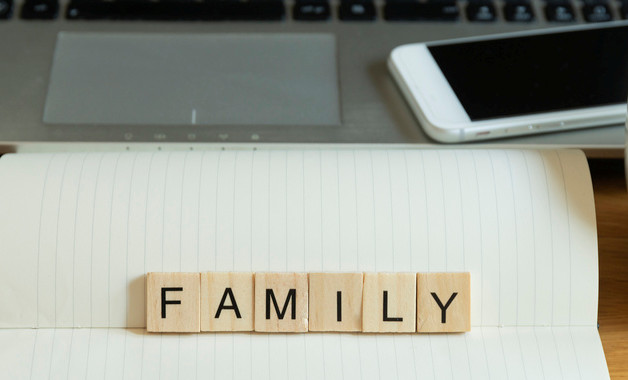
第1篇 小学四年级英语语法知识点总结
情态动词can
can 在英语中有一个特殊的名字,叫做情态动词,表示“能够”, “会”, “能力”后面要跟着表示动作的动词。没有时态和人称的变化。表示不能做什么的时候,后面加上 not为can not,或者缩写为can’t。问别人“能…吗?”要把can 放在句子前面,首字母要大写,句尾别忘加上问号。
人称代词所属格
注意:主格作主语,其中she指带代国家,it可指代天气时间等。
宾格作宾语,介词宾语,表语。动词后面用人称宾格
形容词性物主代词作定语。
名词性物主代词作主语,宾语,介词宾语,表语书信yours…
表示 ---- 的,这样的词我们也学习很多了,你能想出来吗?
记住这个小口诀就很容易了:我的 my ,你的your,他的 his、她的her. //它的是its; 我们的 our; 你们的是 your他们(它们,她们)的是their//这些人称代词形式称为人称代词所属格,也叫形容词性物主代词。通常用在名词前面表示所属关系。另外,表示某人的还可以用名词或人名+ ’s 来表示。如:
my kite;your book;his pen;her coat;its tail;our class;
their teachers;my brother’s;book;the cat’s ears;mary’s mother
第2篇 小学四年级英语语法知识点总结
祈使句用以表达命令,要求,请求,劝告等。
1) 祈使句有两种类型,一种是以动词原形开头,在动词原形之前加do (但只限于省略第二人称主语的句子)。
take this seat.
do be careful.
否定结构:
don't move.
don't be late.
2) 第二种祈使句以let开头。
let 的反意疑问句
a. let's 包括说话者
let's have another try,shall we / shan't we?
= shall we have another try?
b. let us 不包括说话者
let us have another try,will you / won't you?
= will you please let us have another try?
否定结构:
let's not talk of that matter.
let us not talk of that matter.
第3篇 小学四年级英语语法知识点总结
1.小学四年级英语语法总结
1.一般过去时表示过去某个时间发生的动作或存在的状态,常和表示过去的时间状语连用。一般过去时也表示过去经常或反复发生的动作感谢。
2.be动词在一般过去时中的变化:
⑴am和is在一般过去时中变为was(was not=wasn’t)
⑵are在一般过去时中变为were(were not=weren’t)
⑶带有was或were的句子,其否定、疑问的变化和is, am, are一样,即否定句在was或were后加not,一般疑问句把was或were调到句首。
3.句中没有be动词的一般过去时的句子
否定句:didn’t +动词原形,如:jim didn’t go home yesterday.
一般疑问句:在句首加did,句子中的动词过去式变回原形。
如:did jim go home yesterday?
特殊疑问句:
⑴疑问词+did+主语+动词原形?
如:what did jim do yesterday?
⑵疑问词当主语时:疑问词+动词过去式?
如:who went to home yesterday?
2.小学四年级英语语法总结
人称代词分为主格和宾格,主格和宾格区别:主格和宾格汉语意思相同,但位置不同。
eg: i(主格)'我'-- me (宾格)'我'
主格在陈述句中通常放句首,宾格通常放在动词后或介词后,也就是说宾格,不放在句首。
eg :i have a new car.( i 主格)
excuse me (me 宾格)
i ask him to go (him 宾格)
they sit in front of me (me 宾格)
主格(8个):i 我you你 he他 she她 it它 we 我们you 你们they他(她、它)们
宾格(8个):me我 you你 him 他her她 it它 us我们 you你们 them他(她、它)们
3.小学四年级英语语法总结
1、 形容词性物主代词8个:
my your his her its our your their
我的 你的 他的 她的 它的 我们的 你们的 他(她、它)们的
2、 形容词性物主代词的特点:
1)译成汉语都有'的' eg:my 我的 their 他们的
2)后面加名词: eg:my backpack his name
3)前后不用冠词 a an the
this is a my eraser(错误)
that is your a pen(错误)
it's his the pen(错误)
3、i(物主代词)my you(物主代词)your he (物主代词)her we (物主代词) our
注:在变物主代词时,把原题所给的词加上的,再译成单词就可以了。
4.小学四年级英语语法总结
助动词(do/does/did)
问句 答句
do+非第三人称单数
+动词原形…?
…do/don't
does+第三人称单数
…does/doesn't
did+所有主格
…did/didn't
问句 答句
what do you/they/we…
+动词原形?
i/they/we+动词原形…
what does he/she/it…
he/she/it +(动词+s)….
what did you/they/we/ he/she/it…
i/they/we/ he/she/it +动词过去式。
5.小学四年级英语语法总结
名词复数规则
1. 一般情况,直接加-s,如:book-books, bag-bags, cat-cats
2. 以s. x. sh. ch结尾,加-es,如:bus-buses, box-boxes, watch-watches(手表)
3. 以“辅音字母+y”结尾,变y为i, 再加-es,如:family-families, strawberry-strawberries 但boy-boys
4. 以“f或fe”结尾,变f或fe为v, 再加-es,如:knife-knives leaf-leaves
5. 以o结尾 有生命的加es 无生命的加s,如:potato-potatoes tomatoes photo-photos piano-pianos
不规则名词的复数:man-men, woman-women, policeman-policemen, policewoman-policewomen, child-children, foot-feet, tooth-teeth, fish-fish, people-people, chinese-chinese, goose-geese
不可数名词没有复数形式: paper, juice, water, milk, rice, tea
在具体句子中我们应该把不可数名词当成单数看待









